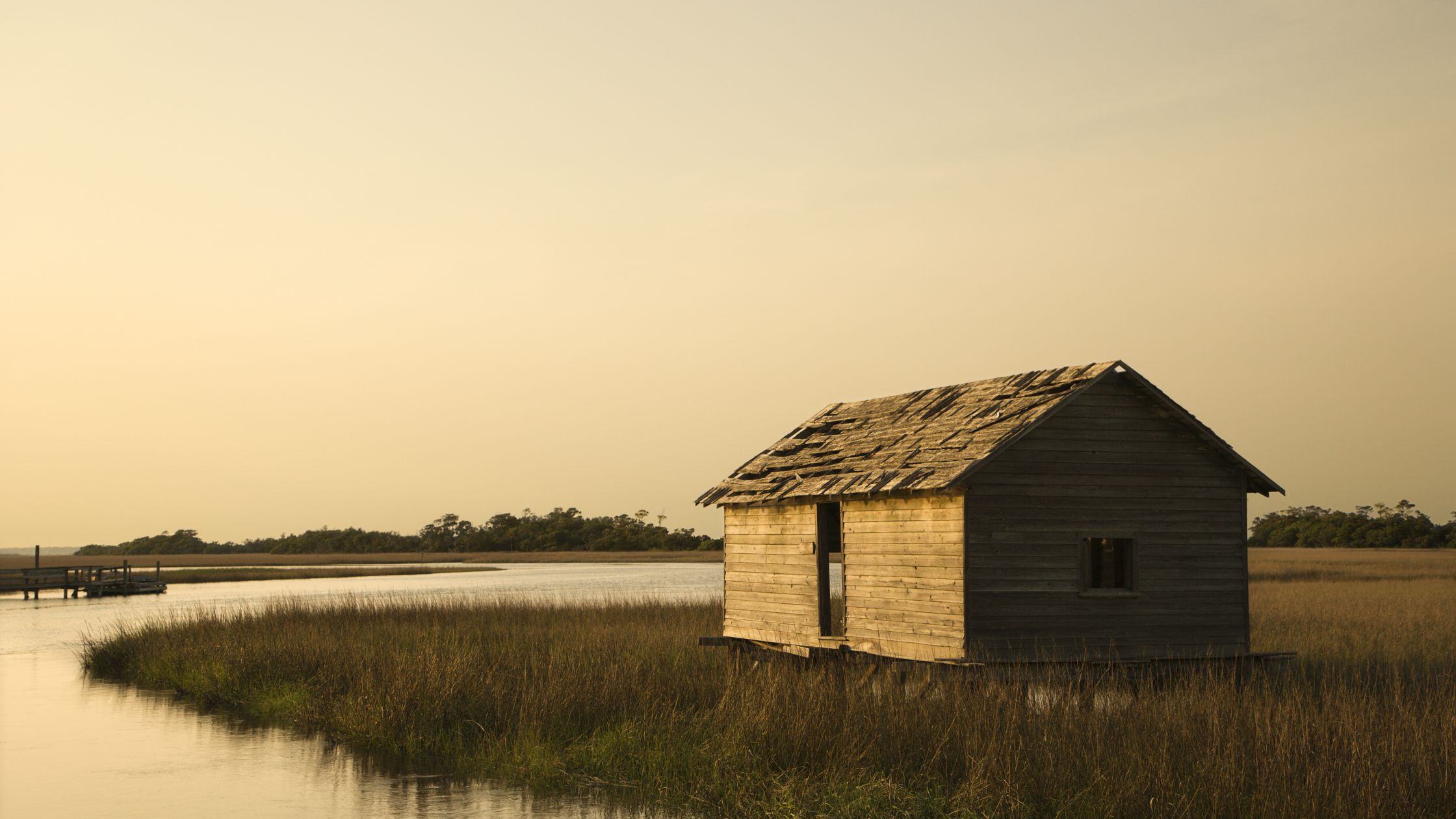Can You Build on Wetlands in Florida?

Strong 8k brings an ultra-HD IPTV experience to your living room and your pocket.
Wetlands in Florida can be built on, subject to strict environmental regulations and difficulties with permits. They exist to preserve Florida’s distinctive ecosystems, notably the wetlands, which cover much of the state. Wetlands play an important role as wildlife homes, as sources of clean water, for reducing floods, and preserving the health of the environment.
As more people move to Florida and the need for housing rises, these exceptional areas are under more pressure to develop. Because they play a major role in ecology, building projects on or near wetlands call for careful review and official approval statewide and federally.
If you're planning to build near wetlands, it's essential to work with Florida construction estimating services early in your planning phase. These professionals help evaluate project feasibility, identify cost implications due to permitting requirements, and integrate mitigation or design changes necessary for compliance with environmental laws.
Understanding Wetlands in Florida
Wetlands are places where the soil is frequently covered by water or water is present nearly all year. Common wetlands found in Florida include marshes, swamps, bogs, and mangroves. You can find a large number of plant and animal species in these ecosystems, many of which live nowhere else.
Wetlands are most commonly grouped into the following categories:
- Freshwater wetlands: Wetlands are found inland, such as those found in cypress swamps, marshes, and wet prairies.
- Coastal wetlands: Wetlands along the coastline, such as salt marshes and mangroves.
They are important because they keep floodwaters safe, filter pollutants, help to recharge groundwater sources, and serve as homes for fish and wildlife.
Is It Legal to Build on Wetlands?
Building on wetlands in Florida is legal, but this comes with very close monitoring by authorities. If you plan to build or work on wetlands, you must first get approval from different government agencies.
- U.S. Army Corps of Engineers (part of the federal system)
- Florida Department of Environmental Protection (FDEP).
- Regional Water Management Districts
Permitting Requirements for Building on Wetlands
Permitting Process:
If you want to build on a wetland, you must first complete a strict permitting process approved by both state and federal authorities.
These types of projects normally require:
Section 404 Permit From The Federal Government:
The Army Corps of Engineers issues these permits following the requirements of the Clean Water Act. You must obtain a permit to release any dredged or filled material into U.S. water resources, including wetlands.
State Permit (Environmental Resource Permit - ERP):
The permit is given by the Florida DEP or a Water Management District. This authorization is meant for handling surface water, keeping wetlands safe, and supervising construction projects.
Types of permits available.
- Nationwide Permit: You can use this if the project is relatively small and will have little effect on the environment.
- Individual Permit: You should get an Individual Permit when your project will cause sizeable environmental issues.
Developers need to consider that buildings may not be allowed to come too near wetlands or water bodies because of local zoning and rules.
Impact Minimization Strategies
During the permit process, agencies look for ways to protect the wetland environment by suggesting changes to the project. For example:
- Minimizing the impact of the project
- Shifting Groups of structures to dry upland land
- Employing Structures with pilings that are placed above the usual ground level
- Installing Features for managing stormwater
There are regulations in many Florida counties requiring a distance from rivers, streams, and wetlands to support natural protection and safeguard sensitive habitats.
Wetland Mitigation Requirements
Mitigation:
If a project affects wetlands, developers are required to repair the damage by carrying out offsetting measures. The plan is to protect the important function and value of all wetlands.
Examples of mitigation are:
- On-site wetland mitigation: Restoring or creating wetlands on the exact property.
- Off-site mitigation: Purchasing credits from a company that works on restoring or preserving wetlands outside the project area.
- Preservation: Making sure that existing wetlands are not developed in the future.
The amount of mitigation necessary is based on the significance and size of the affected wetland.
State 404 Program Considerations
The State 404 Program enabled Florida to take over the federal Section 404 program, allowing the DEP to manage wetland permits more effectively. Due to some legal issues, the program is now on hold.
For this reason:
- Now, developers must collaborate more closely with the U.S. Army Corps of Engineers.
- If there is still litigation, procedures may be further delayed or revised.
Keeping track of these regulatory changes is important to remain compliant and avoid delays in projects.
How to Identify Wetlands on Your Property
It’s necessary to check if your land has any wetlands before planning any construction. Wetlands are often hard to identify during times of little rain.
Wetland Delineation:
It is important for an environmental consultant with qualifications to map and identify the area of a wetland with a delineation. This process checks for:
- Fauna and flora found in damp areas
- Evidence of soil saturation
- Seasonal water or hydrology
To begin permitting or site planning, you need to first determine the scope with delineation.
Challenges of Building on Wetlands
It is legal to build on wetlands, but it also comes with a range of problems:
Time-Consuming Approval Process
Often, the permitting process lasts for months or years when hearings are needed or a project is opposed.
High Costs
Applying for permits, paying for reviews, working with attorneys, and trying to reduce risk can become quite costly. The cost of each mitigation bank credit can be several thousand dollars per acre.
Engineering Difficulties
Wetlands are often built on soil that is not stable and holds too much water, which complicates construction. Sometimes, special foundations, special pilings or drainage systems may be necessary.
Legal Risks
Not getting required permits or following mitigation can result in expensive fines, legal action, and the requirement to repair the area.
Guidelines for Applying for Wetland Permits
Hire professionals early: They can point out wetlands, guide permitting processes, and come up with plans to manage them.
Engage agencies proactively: Contact the Florida Department of Environmental Protection or the Corps of Engineers at the start to understand the restrictions and simplify the process.
Keep thorough records: Document all your work on permits, including assessment materials, correspondence, and what you submit for approval.
Conclusion
Wetlands in Florida can be built, but it must be done within the law and often costs much more. Florida relies on wetlands for its ecosystem, which is why state and federal laws seek to protect them for future generations. Before starting any construction close to or in wetlands, meet with environmental experts and make sure you know all the regulations and actions to follow. With adequate planning, you can improve your land while keeping Florida’s nature intact.
FAQs
How much time does it usually take to secure a wetland permit in Florida?
Depending on the size of the project and the parties involved, getting all the required permits can take several months to a year.
Is it legal to fill in wetlands on my property without getting a permit?
Building or altering wetlands without proper approval is against the law, and those caught can face significant fines and requirements to fix the damage.
What should I do if I build something in wetlands without knowing?
Enforcement actions can be taken for unintentional incidents. If you start construction where wetlands exist without knowing it, you could be made to stop work, issued fines, and restore the affected area.
Note: IndiBlogHub features both user-submitted and editorial content. We do not verify third-party contributions. Read our Disclaimer and Privacy Policyfor details.


